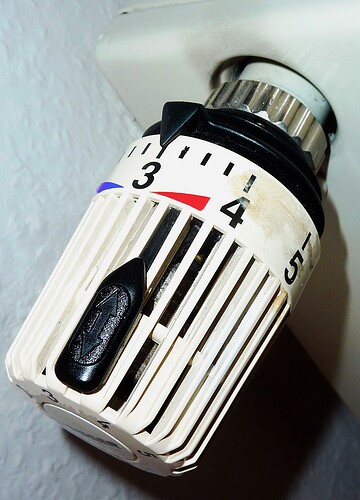Hello everyone,
currently I’m trying to make the heating in my home more smart. For this purpose I’m using HomeAssistant with ZigBee Hydrometers and smart thermostats (TRV) on my heater. It’s working, but the majority of the smart thermostats have one large problem in my opinion: They always need electricity/batteries to work. Because of this, most vendors implement a non optional functionality which are opening the thermostat valve automatically when battery is running low. So when this happening the heater is permanently heating, independent of the room temperature. The reason behind it is to have a freeze protection, but this might become a problem when beeing away for a longer while, for example 2 weeks vaccations. So when the battery is running low, smart thermostates are far away from beeing smart.
Then I was thinking about classic TRV thermostats. I think the way they work is very nifty, especially because it is working without any electrcity, so the anti freeze protection is always working. As a short explanation the classic ones work like this:
You can usually set a target level with turning the handle between freeze protection mode up to 5. Every level is representing a specific target temperature. Inside the thermostat is a material which is automatically expanding and shrinking depending on the temperature. So when it get’s warmer, the material is expanding and automatically closing the valve.
So my idea is: Why not combining the already very clever behaviour of classic thermostats with the advantages of newer smart thermostats. So now I’m searching for a way to control the level options of the classic thermostats via my central HomeAssistant device. So for example when I want to have the target temperature at 20℃ at evening I want that the handle automatically move to level 3 (which is representing 20℃).
I have some experience with ESP devices, which can be implemented within HomeAssistant and I’m also able to code. But I don’t have any idea yet how I can implement the mechanical movement of the handle in an efficent way.
Classic thermostats I’m talking about are looking like this:
Does anyone here has some experience with similar projects and some tipps for me and my project?
Best regards and thank you
